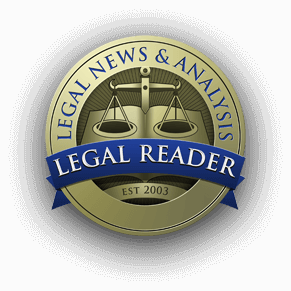The documents required for ISO registration form the foundation of your management system and are crucial for a successful certification audit.
Embarking on the journey of ISO registration is a significant step towards enhancing your organization’s efficiency, quality, and credibility. However, like any formal process, it involves a certain amount of paperwork. Understanding the documents required for ISO registration is crucial for a smooth and successful certification process. This article breaks down the essential documentation you’ll need, making it easy to navigate the initial stages of achieving ISO excellence.
Why Documentation is Key to ISO Registration?
The International Organization for Standardization (ISO) emphasizes a process-oriented approach.
Documentation serves as the backbone of this approach, providing evidence of your organization’s established procedures, controls, and commitment to meeting the requirements of the specific ISO standard you’re pursuing (e.g., ISO 9001 for Quality Management, ISO 14001 for Environmental Management, ISO 27001 for Information Security Management).
Think of these documents as a roadmap for your organization’s processes and a tangible demonstration to the certification body that you have a robust and well-defined management system in place. Accurate and comprehensive documentation not only facilitates the audit process but also ensures consistency and continuous improvement within your organization.
Core Categories of Documents Required for ISO Registration
The specific documents required for ISO registration will vary depending on the chosen ISO standard, the size and complexity of your organization, and the nature of your business. However, they generally fall into the following core categories:
1. Organizational Context and Scope:
- Scope of the Management System: This document clearly defines the boundaries and applicability of your management system. It specifies which products, services, and locations are covered by the ISO registration.
- Organizational Chart: A visual representation of your organization’s structure, including departments, roles, and responsibilities. This helps the certification body understand the flow of authority and communication.
- Context of the Organization: Documentation outlining your organization’s internal and external issues that can affect its ability to achieve the intended outcomes of its management system. This might include SWOT analysis or PESTLE analysis.
- Interested Parties and Their Requirements: Identification of relevant stakeholders (e.g., customers, suppliers, regulatory bodies) and their requirements related to your management system.
2. Policies and Objectives:
- Quality Policy (or relevant policy based on the ISO standard): A documented statement outlining your organization’s overall intentions and direction related to quality (or environment, information security, etc.). It provides a framework for setting objectives.
- Objectives and Plans to Achieve Them: Measurable objectives aligned with your policy, along with documented plans detailing how these objectives will be achieved, including timelines, responsibilities, and resources.
3. Processes and Procedures:
- Process Maps/Flowcharts: Visual representations of your key organizational processes, outlining the sequence of activities, inputs, outputs, and responsibilities.
- Standard Operating Procedures (SOPs): Detailed written instructions outlining how specific tasks or activities are to be performed consistently.
- Work Instructions: Step-by-step guides for performing specific jobs or tasks, often more detailed than SOPs.
- Control of Documented Information: A documented procedure outlining how documents are created, approved, controlled, updated, and made accessible. This includes version control and record retention.
- Control of Records: A documented procedure for identifying, storing, protecting, retrieving, retaining, and disposing of records. Records provide evidence of conformity to requirements.
4. Operational Control:
- Planning and Control of Production and Service Provision: Documents related to how your organization plans, implements, and controls its processes for the provision of products and services. This may include production schedules, service delivery guidelines, etc.
- Requirements for Products and Services: Documentation outlining customer requirements, statutory and regulatory requirements, and your organization’s own requirements for products and services.
- Design and Development Documentation (if applicable): If your organization designs and develops products or services, you’ll need documents related to the design and development process, including inputs, outputs, review records, and validation records.
- Control of Externally Provided Processes, Products, and Services: Documentation related to the selection, evaluation, and monitoring of your suppliers and external providers.
- Monitoring and Measuring Resources: Records of calibration or verification of measuring equipment used to ensure product or service conformity.
5. Performance Evaluation:
- Monitoring and Measurement Plans: Documents outlining what will be monitored and measured, the methods used, when it will be done, and when the results will be analyzed and evaluated.
- Results of Monitoring and Measurement: Records of data collected through monitoring and measurement activities (e.g., customer satisfaction surveys, process performance data).
- Internal Audit Program and Reports: Plans for conducting internal audits and records of the audits performed, including findings and corrective actions.
- Management Review Records: Minutes and records of management review meetings, including inputs, outputs, and decisions made.
6. Improvement:
- Nonconformity and Corrective Action Procedures: Documented procedures for identifying, reviewing, and addressing nonconformities, including taking corrective actions to prevent recurrence.
- Records of Nonconformities and Corrective Actions: Documentation of identified nonconformities, actions taken to address them, and the effectiveness of those actions.
- Evidence of Continual Improvement: Records demonstrating ongoing efforts to improve the suitability, adequacy, and effectiveness of the management system.
The Role of Online Legal India in Document Preparation
Navigating the extensive list of documents required for ISO registration can be a significant undertaking, especially for organizations new to ISO standards. Services like Online Legal India can provide invaluable assistance in this crucial stage. They offer expertise in understanding the specific documentation requirements for various ISO standards and can help your organization:
- Identify the necessary documents: Based on your business type, size, and chosen ISO standard.
- Develop and customize documents: Create policies, procedures, and templates that align with the ISO standard requirements and your organization’s specific processes.
- Ensure compliance: Review your existing documentation and provide guidance on necessary revisions to meet ISO standards.
By leveraging the services of Online Legal India, you can streamline the document preparation process, minimize errors, and ensure that you have a comprehensive and compliant set of documents for your ISO registration audit.
Understanding the ISO Certification Cost and the Value of Proper Documentation

While the ISO certification cost involves fees paid to the certification body for audits and the certificate itself, the cost of internal resources spent on documentation can also be significant. Investing time and effort in creating accurate and comprehensive documentation from the outset can actually help control the overall ISO certification cost by:
- Reducing audit time: Well-organized and readily available documentation can expedite the audit process.
- Minimizing nonconformities: Thorough documentation helps ensure that processes are followed correctly, reducing the likelihood of nonconformities that require additional audit time and corrective actions.
- Improving efficiency: Clear and well-defined processes, as outlined in your documentation, can lead to improved operational efficiency and reduced waste.
In Conclusion
The documents required for ISO registration form the foundation of your management system and are crucial for a successful certification audit. While the specific requirements may vary, understanding the core categories of documentation and taking a systematic approach to their preparation is essential. Services like Online Legal India can provide valuable support in navigating this complex process, ensuring that you have the necessary documentation in place to achieve ISO registration efficiently and effectively. By investing in thorough documentation, you not only pave the way for certification but also lay a strong foundation for continuous improvement and long-term success.

Join the conversation!